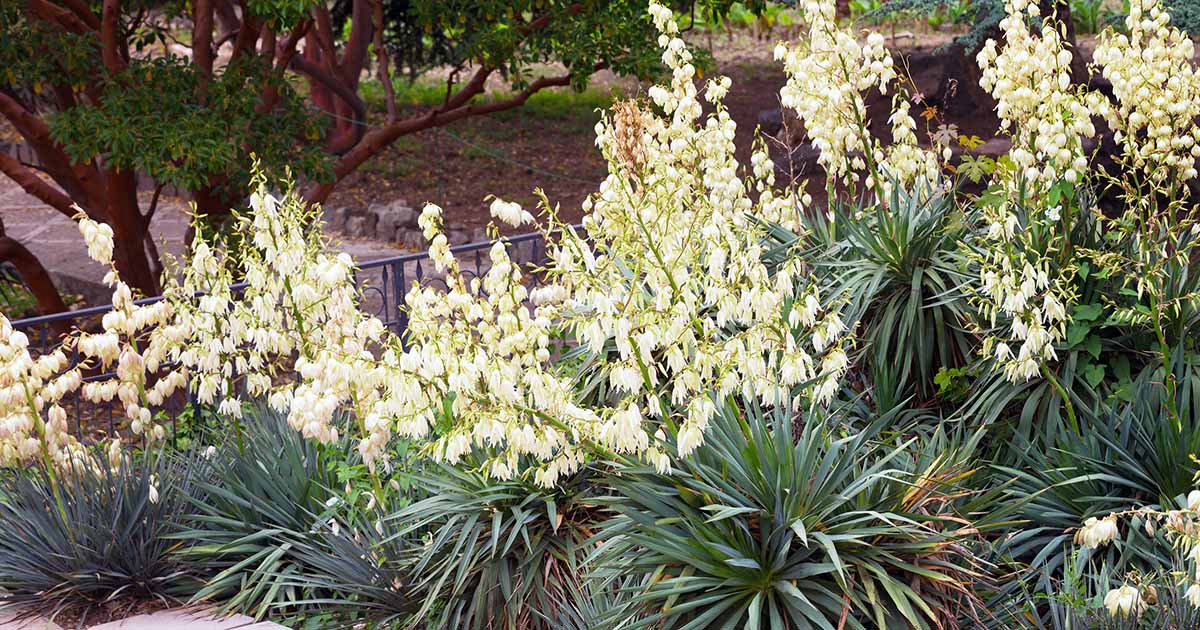
With their unique, spiky shapes and superb drought tolerance, yuccas are the star of xeriscapes and water-wise gardens.
But these denizens of the desert are equally at home growing in containers and garden beds in a wide variety of climates.
Highly versatile plants, these flowering evergreens have long, swordlike leaves that grow in rosettes at ground level or on stalks, adding interesting architectural shapes in a variety of growth patterns including shrubs and trees.
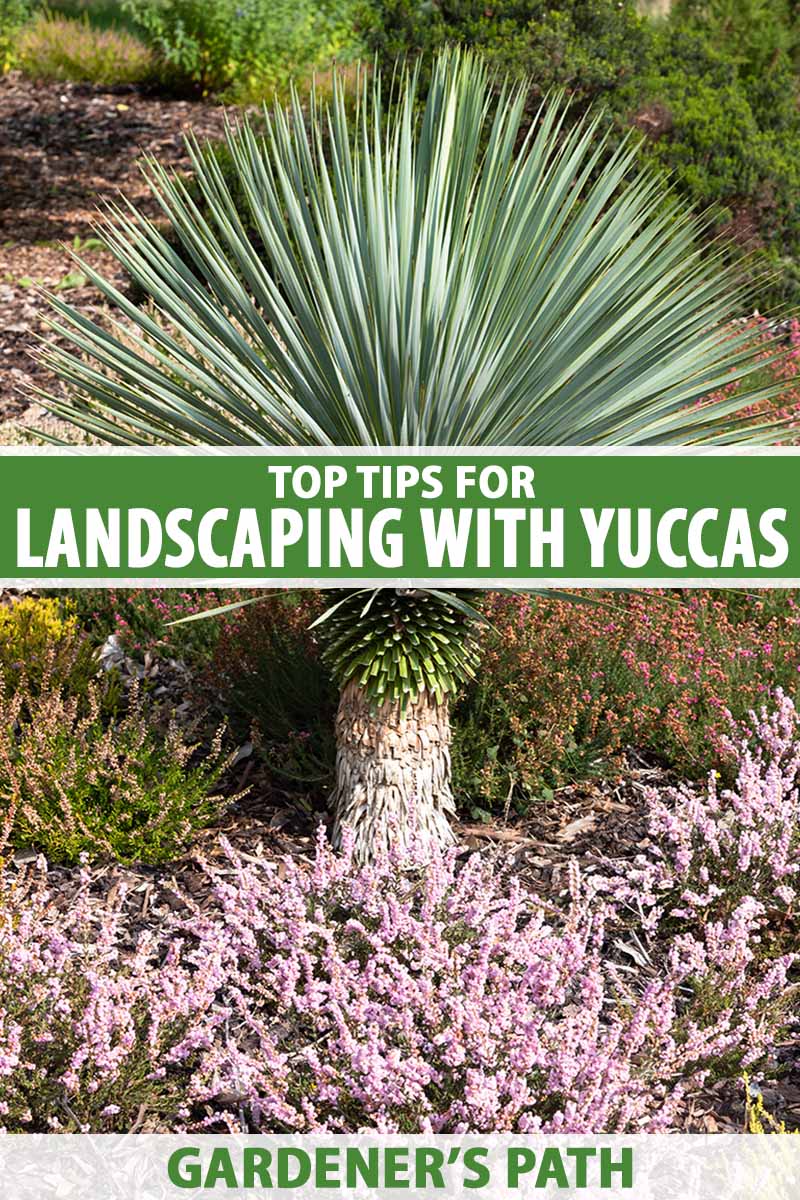
We link to vendors to help you find relevant products. If you buy from one of our links, we may earn a commission.
Many varieties have leaves with razor sharp margins and spiny tips that need to be handled with care when planting and pruning. And it’s advisable to avoid placing them where they can inadvertently poke anyone passing by.
The size of different types varies significantly, with some garden varieties growing up to 20 feet tall! Alone, they make superb specimens or accent plants, and are highly attractive in mixed beds or grouped into barriers, hedges, screens, and rows.
In summer, they produce big, bold spires of edible, bell-shaped cream or white flowers that attract pollinators such as bees, butterflies, hummingbirds, and specialist yucca moths.
Easily cultivated, yuccas are low maintenance and mostly pest free, and they’ll grow in almost any type of soil, as long as it’s well-draining.
The basics are to give them a full sun location, in loose, free-draining soil and avoid overwatering, which is the most common cause of problems – check out our guide to growing yuccas for all the cultivation details.
Now let’s have a look at how to use them in some different landscape settings.
Here’s what’s ahead:
How to Use Yucca in the Landscape
Accents and Specimens
Noted for their striking textures and unique shapes, many of the shrub and tree-like varieties make superb standalone accents and specimens for foundations, islands, and lawn beds, adding several weeks of majestic flower spikes in summer.
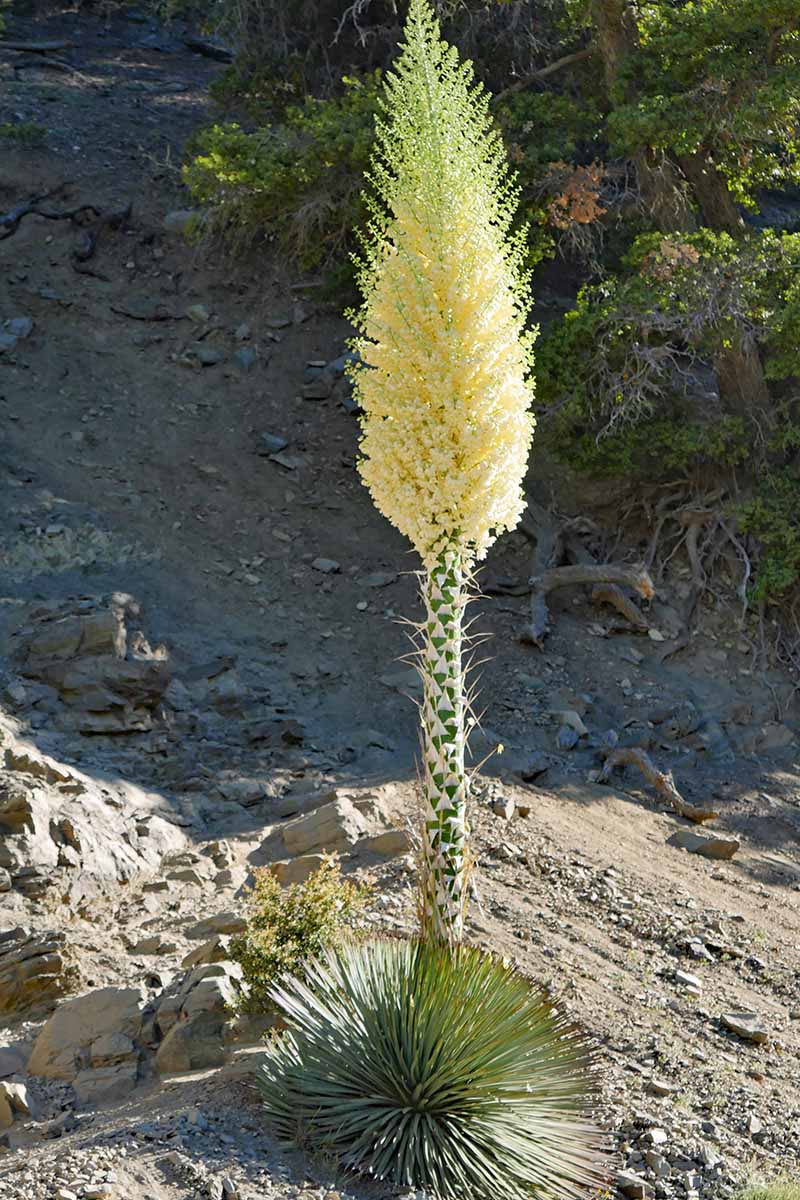
Choose midsized varieties like Buckley’s (Y. constricta), and our Lord’s candle (Y. whipplei), as accents for foundations, islands, and mixed beds, and taller, statuesque types such as blue (Y. rigida), or Spanish dagger (Y. gloriosa), for impressive, eye-catching specimens.
It should be noted that repetition is an important design element, even for plants used as accents and specimens – repeat their standalone status throughout the garden for a powerful visual impact.
Barriers, Hedges, and Screens
With broad, strappy leaves, dense rosettes, and thick stems, yuccas make a good choice for barriers, hedges, or privacy screens.
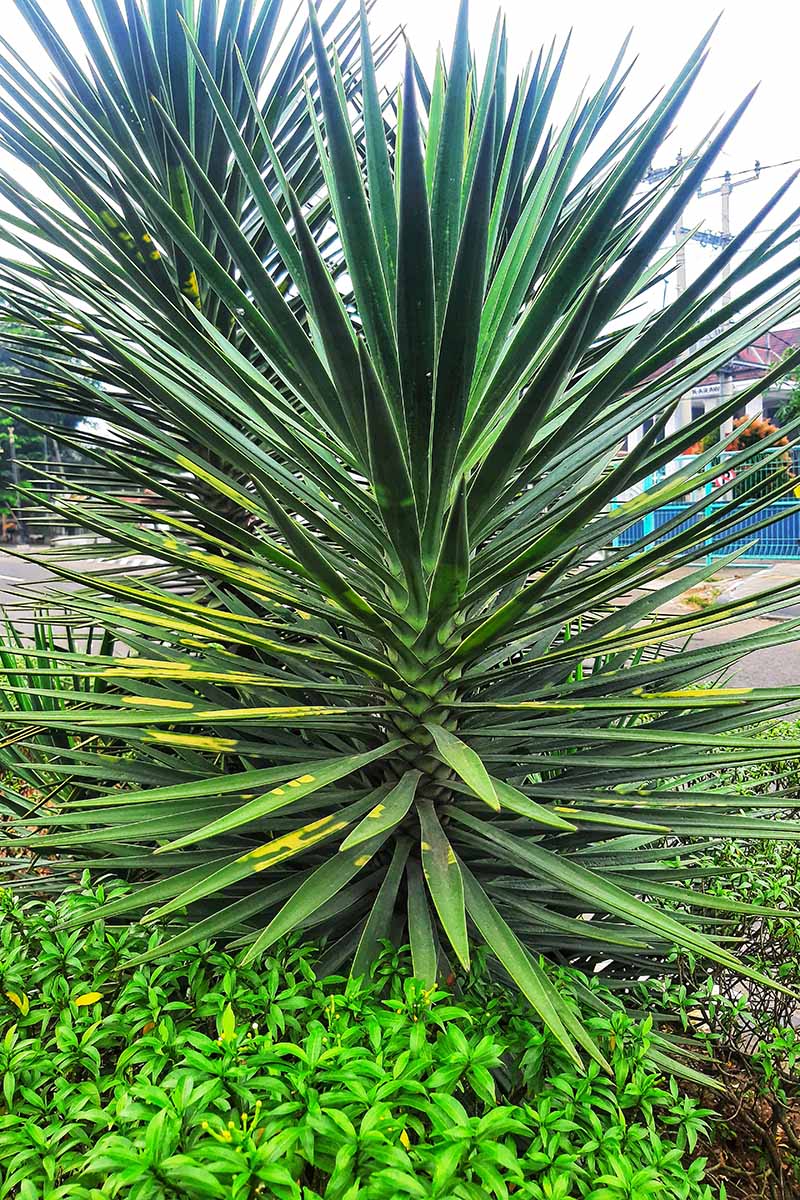
Due to their sharp, spiny leaves, most varieties aren’t suitable for borders in locations where they can be easily brushed against. But they do make good defensive plantings!
Grouped or massed into dense, straight rows or clustered stands, they provide a strong sight line and are practical as well, effectively absorbing dust and noise, providing relief from persistent winds, and screening out neighbors or unappealing scenes.
For low barriers, use ground hugging varieties like the popular Adam’s needle (Y. filamentosa), or the trunkless twisted species, Y. rupicola. Plant in a straight row or a zigzag pattern to create dense, impenetrable barriers.
For higher hedges and privacy screens, or to create a framing sightline, plant taller varieties in the range of five to twelve feet such as aloe (Y. aloifolia) or the short-trunked Buckley’s (Y. constricta).
Containers and Planters
Highly valuable in the dry garden, some species also make excellent container plants that can be used as a focal point or as part of a themed group for decks, patios, and throughout the landscape.
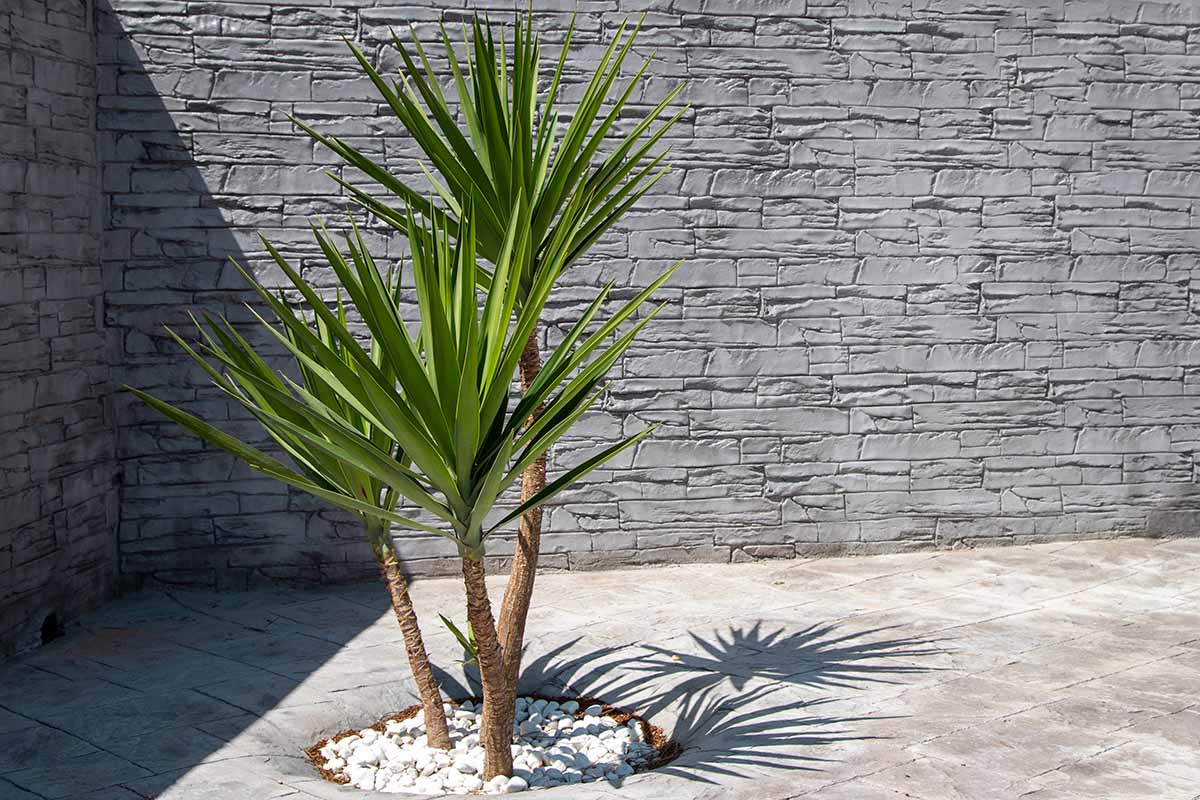
To contain their large taproots, you’ll need a big container – and pots must have drainage holes to prevent waterlogged soil, which can lead to root rot.
Avoid the towering, tree-like varieties for container growth and choose types that maintain a compact or midsize form, such as the dwarf nana variety, Y. harrimaniae x nana, or Adam’s needle (Y. filamentosa).
Place containers in a full sun location and remember that you’ll have to water them more frequently than those grown in the ground – apply water when the top two inches of soil dries out.
Learn more about how to grow yuccas in containers in our guide.
Gravel and Rock Gardens
Gravel and rock gardens are typified by sunny, well-draining conditions and are populated with low maintenance plants that require less water than other garden settings.
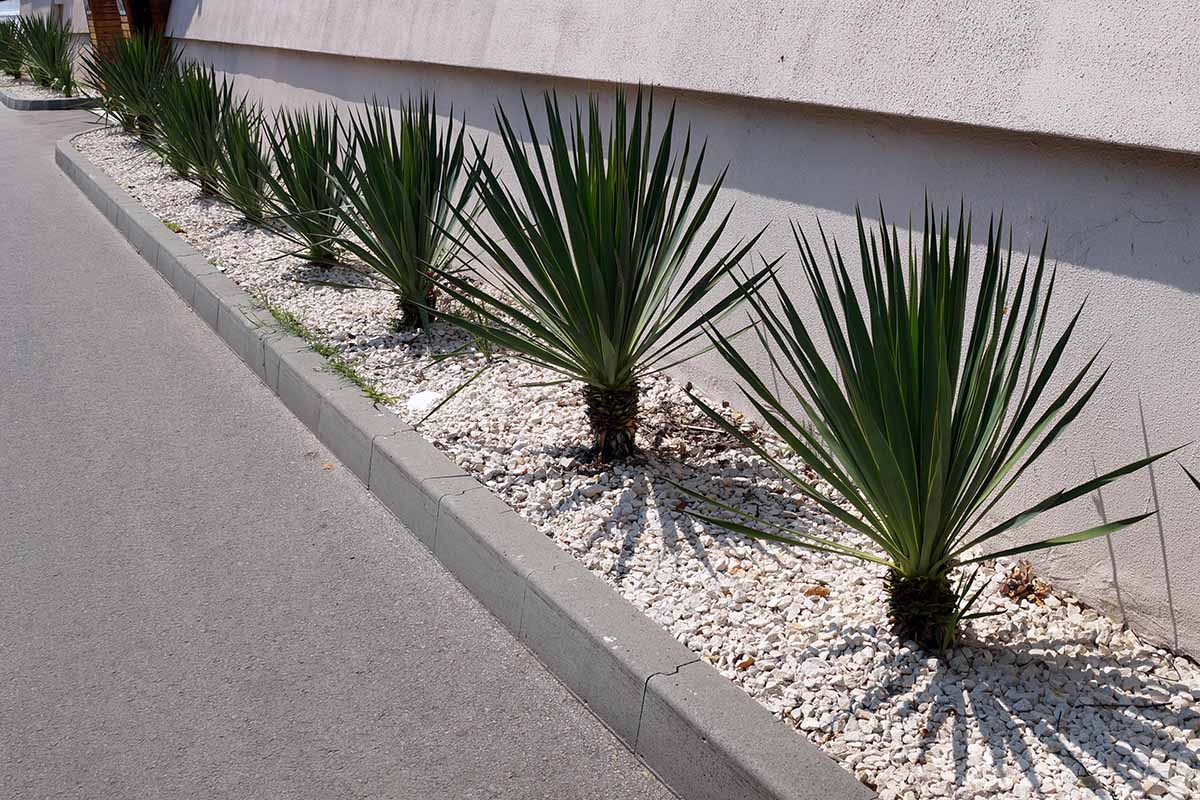
With their striking silhouettes and drought tolerance, these large succulents make an eye-catching impact in the minimalist surroundings of gravel beds, rockeries, and meditation or zen gardens.
Depending on the size of the beds, varieties of different sizes can be used, from ground hugging types like weak leaf yucca (Y. flaccida), to the midsize, short-stemmed Spanish dagger (Y. gloriosa), and taller, sculptural species such as our Lord’s candle (Y. whipplei) and Mojave yucca (Y. schidigera).
Plant solo specimens to showcase their impressive stature and create a compelling focal point, or cluster them in groups of three to five to create a cool, succulent oasis in the arid gravel.
Mixed Beds
To use yuccas successfully in mixed perennial or shrub beds, plant them with colorful, water-wise plants like herbs, drought tolerant perennials, and succulents.
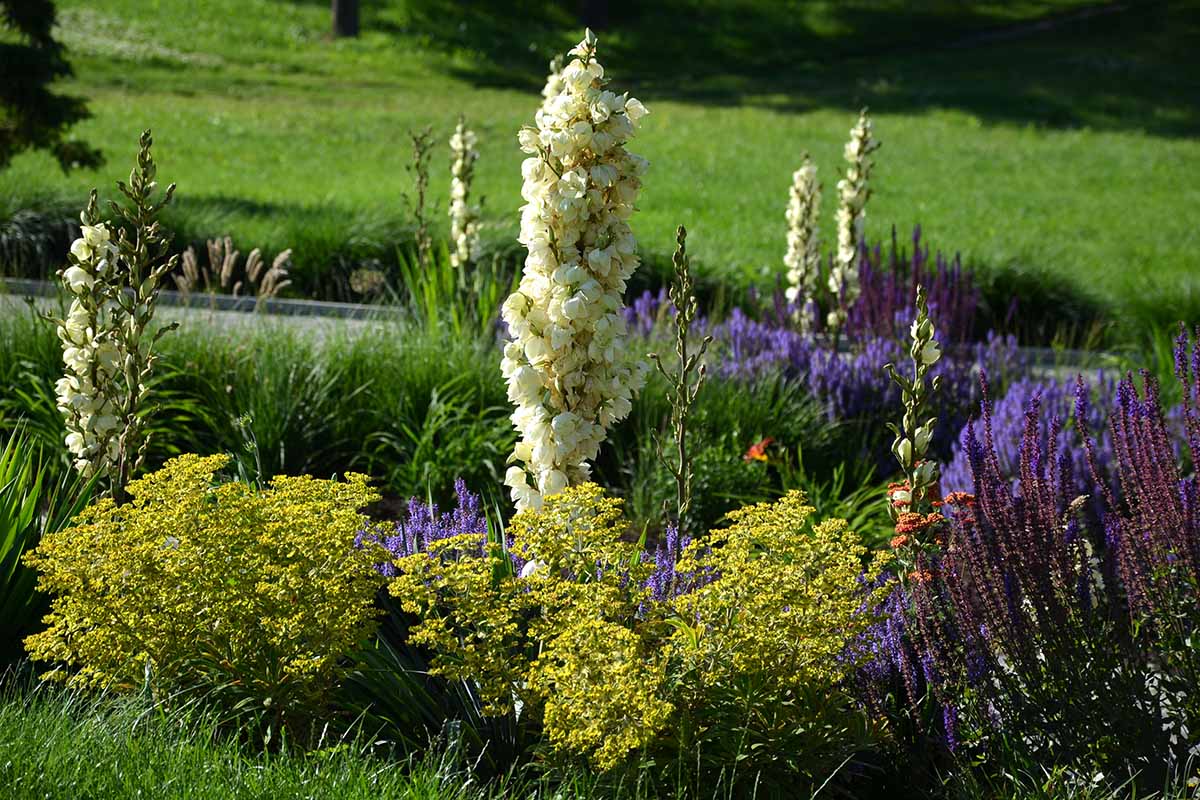
Place small types such as the dwarf nana variety (Y. harrimaniae x nana) at the front of beds or layer in small and midsized varieties like Adam’s needle (Y. filamentosa) and weak leaf (Y. flaccida) throughout the middle and back of beds.
For colorful, low maintenance plantings, mix with the likes of alliums, coreopsis, euphorbia, gaillardia, gaura, lavender, nepeta, sage, santolina, and sea holly – and remember to repeat your chosen varieties throughout the plantings for a strong, flowing scene.
Southwestern or Desert Garden Themes
When your southwestern or desert-themed gardens need a little giddyap, these hard working xerophytes gallop to the rescue.
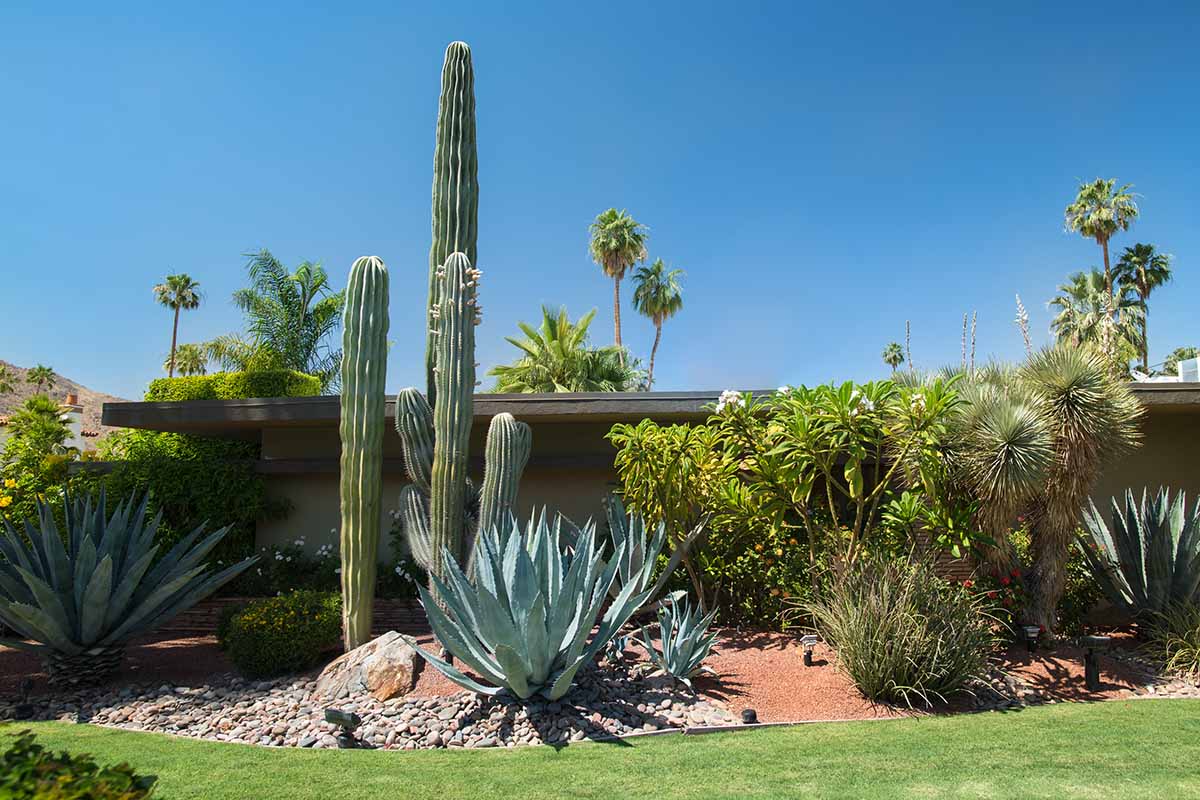
Rugged in the extreme, they’re ideal in the scorching hot sunshine and arid conditions common to the southwestern US and desert locations in general.
Use shorter forms like weak leaf yucca (Y. flaccida) as fillers with other native desert species such as agave, cacti, echeveria, Indian paintbrush, penstemon, purple sage, and sempervivum.
And add in large, towering totems like soaptree (Y. elata) and palm yucca (Y. decipiens) to watch over all things dry and gritty.
Water-Wise Fringes
For those corners, fringes, and margins that fall outside the reach of your irrigation systems, yuccas are an ideal plant-and-forget choice.
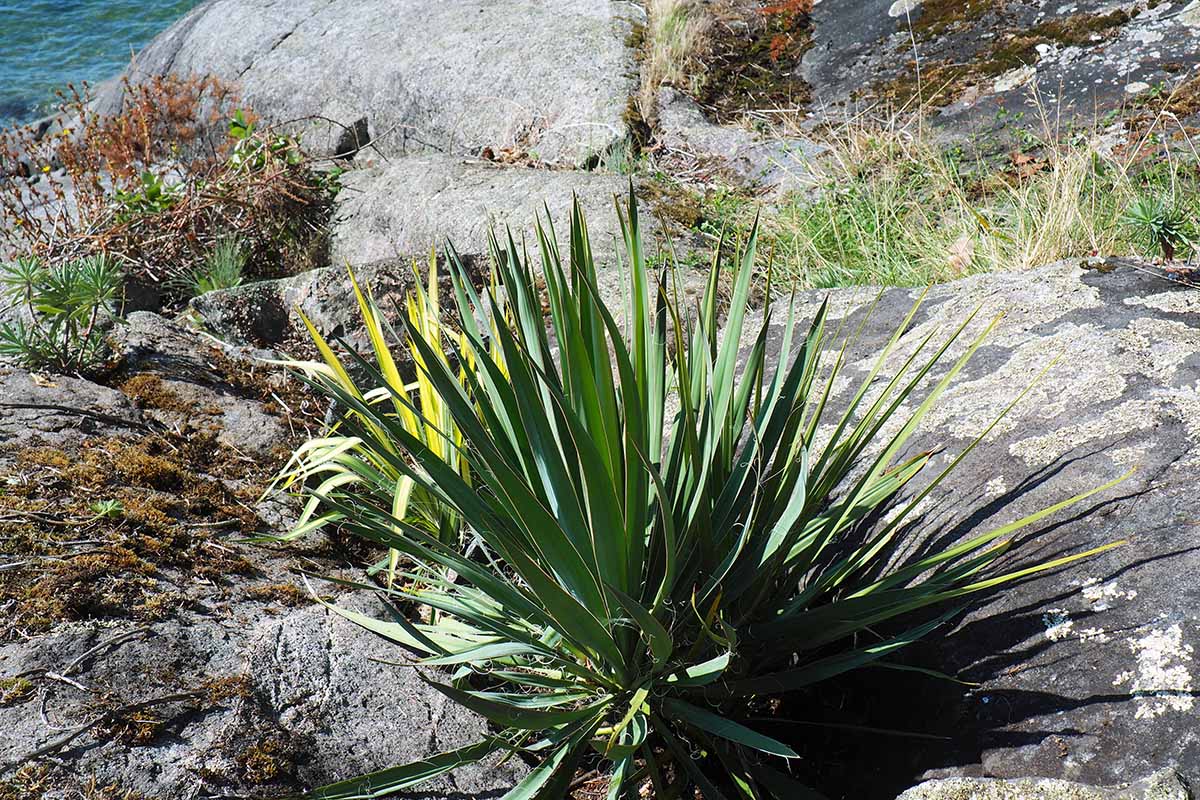
Any size or variety can be used and the only growing requirement is excellent drainage – they thrive in average to poor soils.
If you plant out in arid fringes in spring, water your plants regularly until they’re established. An easier option is to plant in fall and let the autumn and winter rains do the work for you.
Once they’re established and growing well, the only attention they’ll need is the occasional cleanup to remove dead foliage.
Superb Spiky Plants
Spiky plants like yuccas are superb for adding drama to almost any garden setting.
Group them into masses for hedges and screens or showcase them as accents and specimens for exciting focal points.
Their robust toughness makes them a natural in desert, gravel, and rock gardens, where they thrive in baking sun and hot, arid conditions.
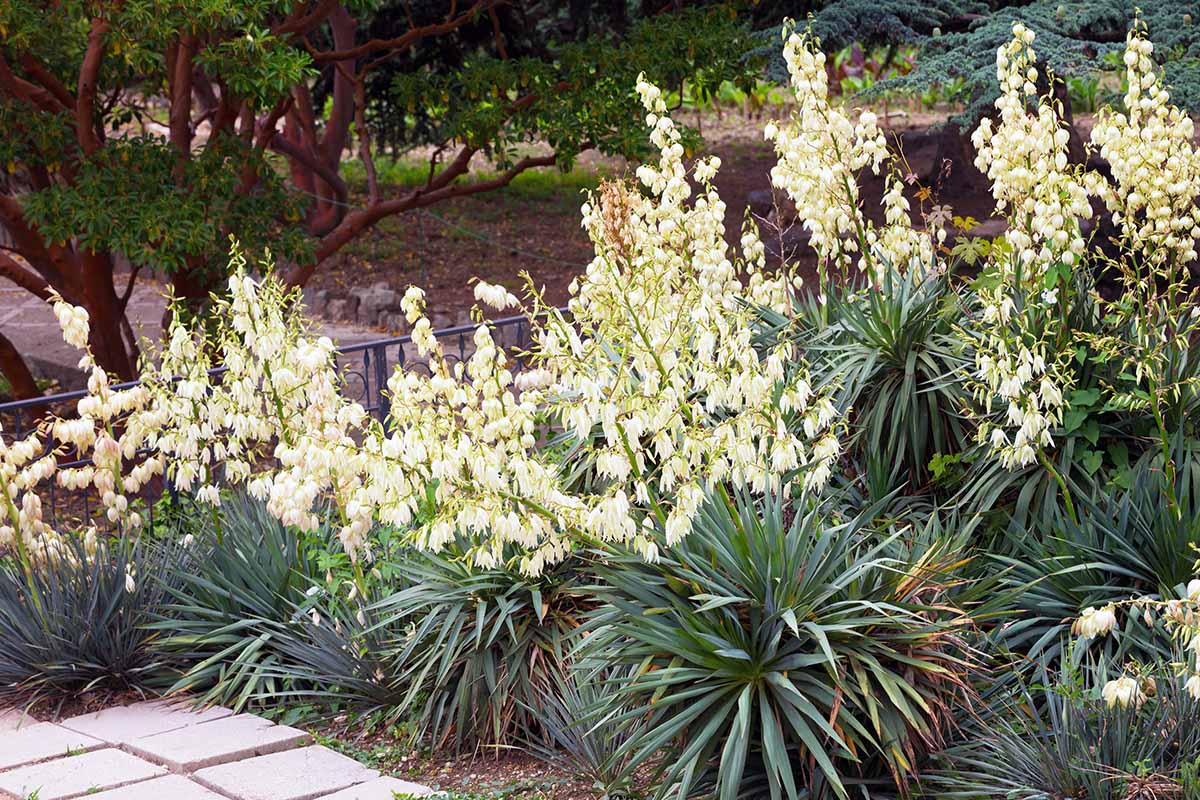
And in mixed beds, plant these xerophytes with other low-water, easy-care perennials that need well-draining soil as well.
Tidy them up annually to remove dead leaves, and that’s about all the maintenance they need… perfect for low-care settings!
How do you folks landscape with succulents? Tell us about it in the comments section below.
And for more yucca growing tips, add these guides to your reading list:





